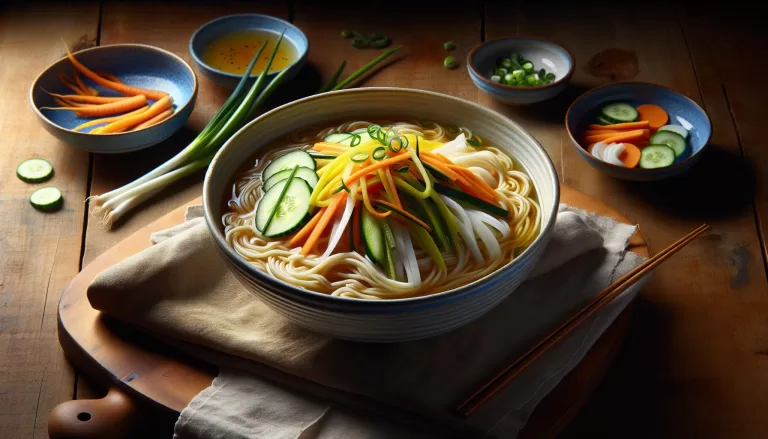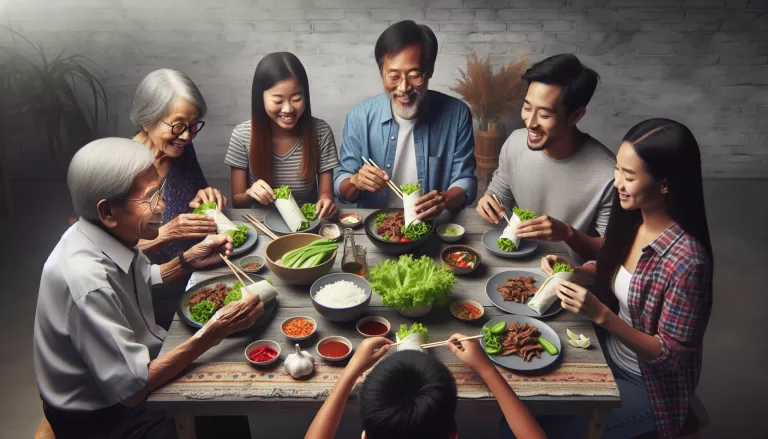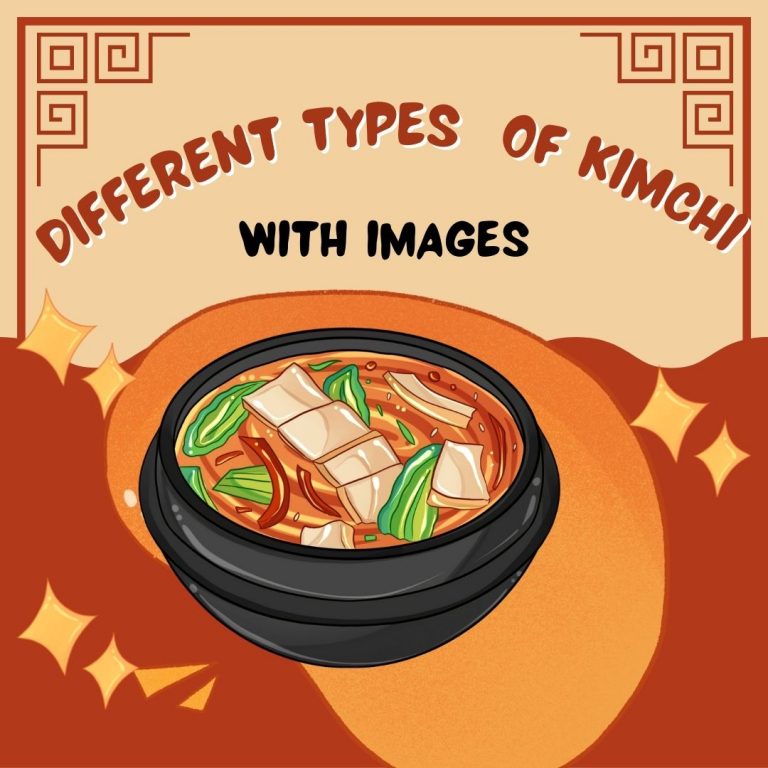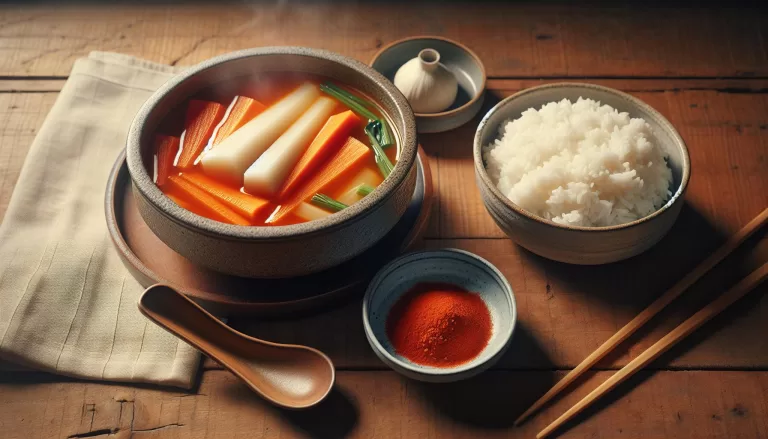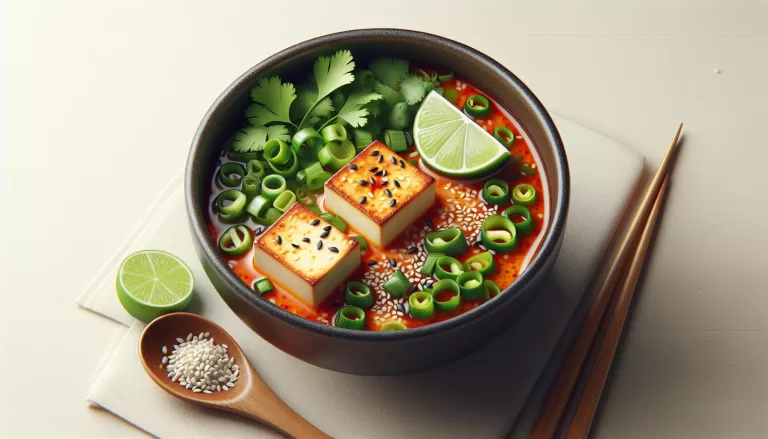Easy Homemade Dweji Bulgogi Korean Spicy Pork BBQ Recipe and Serving Tips
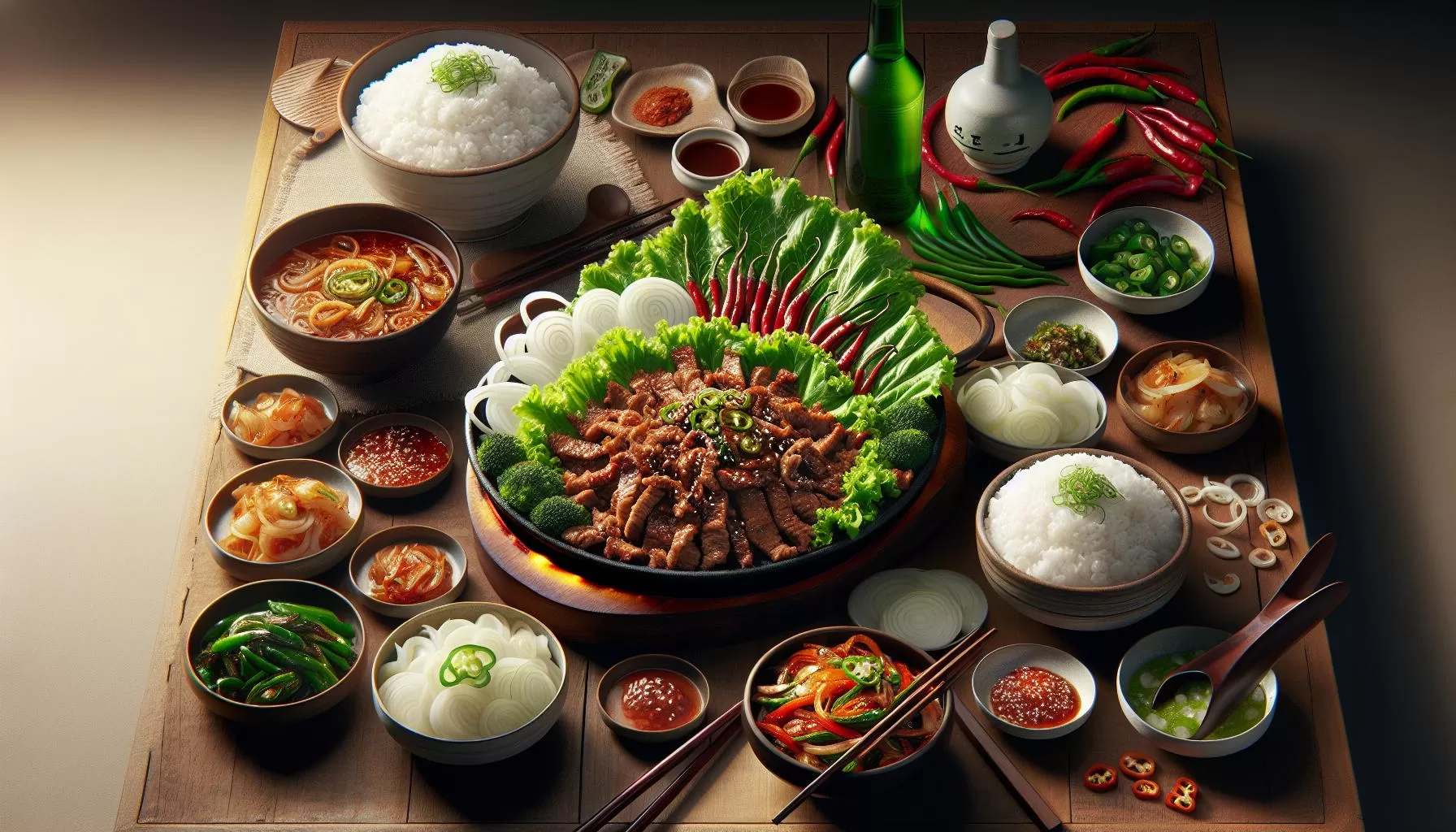
Choosing the Right Cut of Pork
Let’s get this straight: the cut of pork you choose for your Dweji Bulgogi will make or break your dish. So, it’s crucial to pick wisely!
To dish out the spiciest and juiciest Korean BBQ, pork shoulder is your best bet. It’s marbled with the right amount of fat, imparting a juicy and tender deliciousness to your dish. Plus, pork shoulder carries your flavors like no other cut.
| Cut of Pork | Characteristics |
|---|---|
| Pork shoulder | Juicy, tender, and flavor-packed |
However, if you can’t find pork shoulder, don’t fret! Pork belly is a solid backup. It imparts an unmatchable depth of flavor and really lets the spicy marinade shine.
Another point to remember is that thin slices are key. They’ll soak up the marinade like sponges and cook up quick on your grill or skillet!
Here’s the skinny on the nutritional value of your chosen cut:
| Pork Cuts | Calories per 100g | Carbs | Protein | Fat |
|---|---|---|---|---|
| Pork shoulder | 200 | 0g | 19g | 13g |
| Pork belly | 518 | 0g | 9.3g | 53g |
So, depending on your dietary needs, you can choose wisely!
Though Dweji Bulgogi is traditionally spicy, you’re the chef! Feel free to dial back on the heat or kick it up a notch. But remember: your choice of pork cut will significantly influence the flavor and texture of your homemade Dweji Bulgogi.
In the end, it’s your kitchen. Your rules! Let’s move onto creating that perfect marinade to coat your chosen cut, shall we?
Marinating the Pork

Another essential step to achieving that perfect Homemade Dweji Bulgogi is marinating the pork.
Marinating isn’t just about making the meat taste better. It’s also about tenderizing it and making each mouthful a flavor-filled delight.
Now that you’ve chosen the right cut of pork, let’s talk marinade.
Your marinade will include the following ingredients:
- Soy sauce (1/2 cup)
- Sugar (1/3 cup)
- Honey (1 tablespoon)
- Korean red chili pepper paste (1/3 cup)
- Minced garlic (2 teaspoons)
- Minced ginger (1 teaspoon)
- Sake or rice wine (2 tablespoons)
- Sesame oil (1 tablespoon)
Mix all of these ingredients together in a bowl until well combined.
Here’s where an alternative ingredient tip may come in handy for you. Many swear by adding a bit of Asian pear or kiwi to their marinade. Why? These fruits contain enzymes that help tenderize the meat. Plus, they offer an exciting, subtle sweetness that beautifully complements the spice in your marinade.
The nutritional profile of your marinade mainly depends on the chili paste you use. A typical serving of Gochujang or red chili paste adds around 60 calories, 0.6g of fat, and 12g of carbs to your meal. What’s more, it’s rich in vitamin B6, Niacin, and Riboflavin.
After mixing your marinade, begin coating your thin pork slices. Be sure every piece gets generously enveloped in this spicy-loving bath. Once all your slices are happily marinating away, allow them to sit. You’ll need to plan ahead—a good 30-minute soak will give flavors time to penetrate, but overnight in the fridge is even better.
After the marinating process, fire up your barbeque and get ready for the next exciting step: grilling your Homemade Dweji Bulgogi to perfection.
Preparing the Spicy Sauce

After marinating your pork, it’s time to take your dish a notch higher. Preparing the Spicy Sauce for your homemade Dweji Bulgogi is an art in itself that you’ll master with this guide. It’s not only about the heat, but also taste complexity that will have your guests begging for your secret.
Begin with 1 tablespoon of finely chopped garlic. Garlic adds a depth to your sauce that gets the taste buds on their toes. Next, add 1 tablespoon of chopped green onions. Their mild sweetness works like magic and balances the spiciness.
For the backbone of your sauce, add 4 tablespoons of Gochujang or Korean hot pepper paste. For versatility, you could tweak this quantity to fit the heat tolerance of your guests.
| Ingredients | Quantity |
|---|---|
| Finely chopped garlic | 1 Tablespoon |
| Chopped green onions | 1 Tablespoon |
| Gochujang | 4 Tablespoons |
To give your sauce an authentic Korean touch, don’t forget the 2 tablespoons of Doenjang or Korean soybean paste. It enhances flavor without overpowering the main star – the pork.
Your sauce cannot be complete without a sweet touch. To balance the heat and the savory elements, add 2 tablespoons of honey or syrup. If you have a preference for natural, low-glycemic sweeteners, Agave nectar works splendidly.
Now as a unique touch, consider 1 tablespoon of Korean curry powder. Although not typical in the traditional recipe, it adds a distinct flavor profile that will set your Dweji Bulgogi apart.
Stir all these ingredients together over low heat until well blended. Allow the sauce to simmer, absorbing all the flavors creating a sensational taste. Remember, good cooking is about creativity and experimenting. Feel free to switch up ingredients based on your preference or dietary requirements. Simply ensure you’re maintaining that balance between sweet, savory, and spicy.
Breaking the ingredients down, the table below provides nutritional aspects you might find useful.
| Ingredients | Calories | Carbs | Proteins | Fats |
|---|---|---|---|---|
| Finely chopped garlic | 4 | 1g | 0.2g | 0g |
| Chopped green onions |
Cooking the Dweji Bulgogi

Having crafted your spicy sauce, it’s time to mingle these tastes with your pork. Let’s turn our focus to actually cooking the Dweji Bulgogi.
First, you’ll need about 2 pounds of thinly sliced pork shoulder or pork belly. Place it in a large bowl and pour your previously created spicy sauce over it. Mix it well, ensuring that all pieces are coated evenly. Let it marinate for at least an hour.
If you have time, let it rest overnight. The pork will absorb the flavors more deeply, making your Dweji Bulgogi even more delicious.
While your marinated pork is resting, prepare your vegetables. Slice some green onions and a white onion. Koreans love adding Perilla Leaves and Green Chili Peppers for an extra kick.
If you’re not a fan of spicy food, feel free to sub these out for your preferred veggies. Personalization is key!
When the marinating time is over, heat a grill or a large skillet over medium-high heat. Cook your pork. You want to see that gorgeous caramelization, but avoid burning. Your cooking time will depend on the thickness of your pork slices. Usually, it would take around 4 to 5 minutes each side.
While cooking, add your sliced onions and optional veggies. Stir it occasionally, blending the tastes.
| Ingredients | Quantity |
|---|---|
| Pork Shoulder or Belly | 2 pounds |
| Green Onions | As needed |
| White Onion | 1 |
| Perilla Leaves | As needed |
| Green Chili Peppers | As needed |
That’s the basic science of cooking your Dweji Bulgogi. Experiment with the types of vegetables you use or marinating times to alter the flavor profile according to your liking.
Aside from its mouth-watering taste, this homemade Dweji Bulgogi is also packed with nutritional value. It’s high in protein with a good amount of vitamins, from the meat and the abundance of veggies.
Serving and Enjoying Homemade Dweji Bulgogi

The real treat of homemade Dweji Bulgogi lies not just in its cooking, but in the way you serve and enjoy it. As a homemaker, you’ve got control over how you present this Korean BBQ to your guests or family. The perfect way to serve Dweji Bulgogi is on a fresh lettuce leaf. Top that juicy, spicy pork with a dollop of ssamjang, a flavorful Korean dipping sauce. The crispness of the lettuce and the savory punch of ssamjang intensify the taste sensation of the BBQ.
Alternately, you might prefer to present your Dweji Bulgogi as it’s often served in Korea, on a sizzling platter, with onions, green chillies, and perilla leaves adding an additional layer. Pair it with a bowl of steamed white rice. The delicate, slightly sweet rice serves as an ideal counterpoint to the fiery flavors of the Bulgogi.
Don’t forget the side dishes too! Korean meals aren’t complete without banchan, an assortment of small side dishes that accompany the main course. Common banchan includes kimchi, Korean pickles, and spicy cucumbers. Your flavorful feast will be a hit with everyone!
To dial up the authenticity, serve your Dweji Bulgogi with soju, a Korean distilled spirit. It’s a traditional Korean touch your guests will appreciate. The clean, sharp taste of the soju is the perfect complement to the rich, spicy flavors of the Bulgogi.
Let’s consider the nutritional aspect of your meal too. Your homemade Dweji Bulgogi is packed with protein from the pork and vitamins from the vegetables. It’s a meal as nutritious as it is delicious.
When you’re preparing a unique dish like this, remember to personalize it to your taste. Adjust the spice levels, swap out the veggies, or experiment with the marinating time. In the end, how you choose to serve and enjoy your Dweji Bulgogi is entirely up to you!
With an enticing spread like this, everyone is bound to be eagerly anticipating the next time you whip up your homemade Dweji Bulgogi.
Conclusion
You’ve got the inside scoop on how to enjoy homemade Dweji Bulgogi. Now it’s time to put that knowledge to good use. Remember, the beauty of this dish lies in its flexibility. You can serve it on lettuce with ssamjang or sizzle it up with onions and chilies. Pair it with steamed rice, banchan, or even a shot of soju. It’s a feast not only for your taste buds, but also for your health, packed with protein and vitamins. Don’t shy away from personalizing your Dweji Bulgogi. Experiment with the spice levels, add your favorite veggies, and play around with marinating times. There’s no right or wrong way to enjoy this Korean BBQ. It’s all about creating a dining experience that’s uniquely yours. So go ahead, roll up your sleeves, and get ready to delight in the flavors of homemade Dweji Bulgogi.
